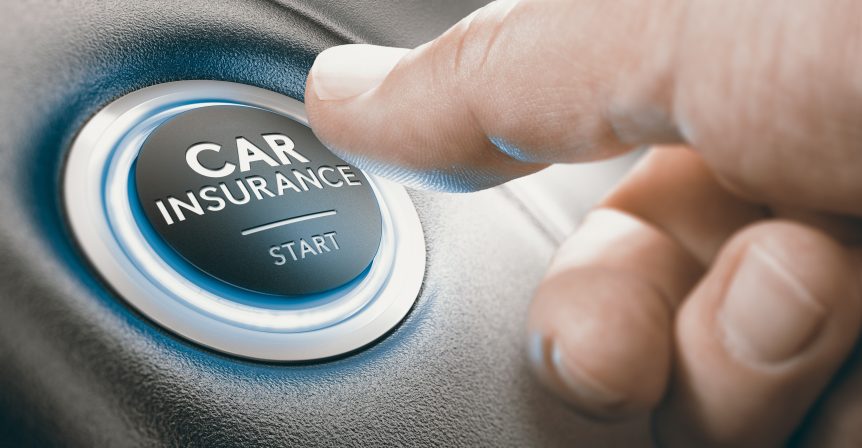Unlike health insurance, there are no annual deductibles to meet when it comes to auto insurance. You’re responsible for your policy’s stated deductible every time you file a claim. After you pay the car deductible amount, your insurer will cover the remaining cost to repair or replace your vehicle.
EXAMPLE:
You have a $500 deductible and $3,000 in damage from a covered accident. Your insurer will pay $2,500 to repair your car, and you’ll be responsible for the remaining $500.
Comprehensive and collision are the two most common car insurance coverages that include deductibles. You may also have a deductible for personal injury protection or uninsured/underinsured motorist property damage in some states. Auto insurance deductibles work exactly the same for all coverage types.
Here’s a quick overview of how deductibles work and how they influence your insurance rate:
What if my car insurance deductible costs more than my repairs?
If your auto insurance deductible is higher than the cost of the damage to your vehicle, you’ll pay for the entire cost out of pocket as the insurer only covers damages above your deductible amount. In these cases, you may not need to file a claim.
EXAMPLE:
Your car repairs only amount to $800 and your deductible is $1,000. You’ll pay for all the repairs out of pocket because the cost is lower than your deductible amount.
High vs. low car insurance deductibles
In most cases, you can choose whether you want to pay a higher or lower deductible for car insurance. Car insurance deductible amounts typically range from $100 to $2,000. The most common deductible our drivers choose is $500, but there’s no wrong choice. Ultimately, it comes down to what you prefer:
Higher deductible = Lower car insurance rate and higher out-of-pocket costs
Lower deductible = Higher car insurance rate and lower out-of-pocket costs
Choose an auto deductible amount you’re comfortable with, and make sure you can afford to pay your deductible out of pocket in the event of a claim. It’s also important to consider your driving history and the likelihood of filing a claim. You may opt for a higher car insurance deductible because you’re betting against having an accident, but if you’ve had accidents in the past and often drive on busier roads, you may be more likely to file a claim and pay a deductible.
When do you pay a car insurance deductible?
You pay your deductible any time you file a claim under a coverage that carries a deductible, assuming the damage is covered and costs more than your deductible amount. If your claim is approved, your deductible will typically be applied when your insurance company issues your payout. You generally don’t have to write a check or make a payment to your insurer. They simply subtract your deductible amount from your claim’s approved payout. Suppose you have a claim approved for $5,000, and your deductible is $250. In that case, your insurance company will issue you a check for $4,750.
Do I pay a deductible if I hit a car?
If you cause an accident but don’t damage your car, you won’t pay a deductible. In this scenario, your liability coverage would pay for the other driver’s injuries and property damage, which doesn’t carry a deductible. However, if your vehicle is damaged in the accident, and you decide to file a collision claim, then you would pay your collision deductible.
Do I pay a car insurance deductible if I’m not at fault?
If the other driver is officially deemed at fault, their insurance company can pay for your repairs if you file them, and you won’t have to pay your deductible. If you have collision coverage, you can also choose to go through your own insurer, who will seek reimbursement (including your deductible) from the other driver’s insurance company. In situations where fault is shared, you may end up paying all or part of your auto insurance deductible.
Keep in mind, if an uninsured or underinsured driver hits you, a deductible may apply to your uninsured/underinsured motorist property damage coverage in certain states.
Other situations with no deductible
An auto insurance deductible won’t apply to you in the following scenarios:
1. Another person files a claim against your liability coverage
There is no car insurance deductible on a liability claim, meaning you pay nothing out-of-pocket for an accident in which your insurer pays for the damages and/or injuries you caused to another person, up to your policy’s limits.
2. You selected a disappearing deductible
Some insurers offer a “disappearing deductible” program that lowers your deductible a set amount for each violation- and claim-free policy period. After a certain number of policy periods, you can end up with a $0 deductible for comprehensive or collision claims. However, your deductible typically resets to its original amount after filing a claim.
3. You have free repairs on glass claims
In some states, your insurer may repair or replace your windshield without requiring a deductible, or they may give you the option of choosing a $0 deductible for glass claims. Other insurers, may waive your deductible if they can repair your windshield rather than replacing it.

